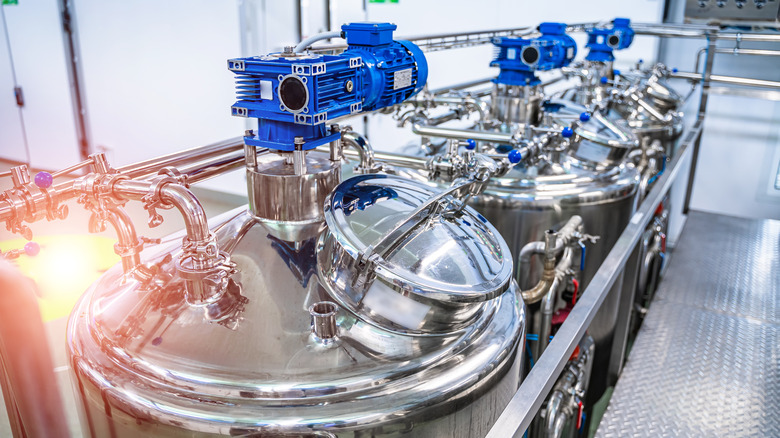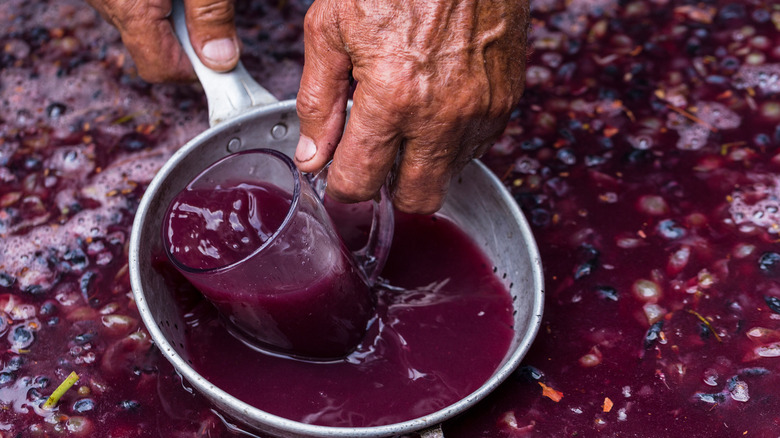The Experimental Origins Of Pasteurization
The topic of pasteurization rarely arises in conversation between friends, family, colleagues, or, well, anybody. But if that scientific word printed on various grocery items does get a passing mention, it likely revolves around milk or other dairy products regulated by the FDA. We take pasteurization for granted in modern times, perhaps even failing to recognize its remarkable impact on food consumption since its debut in 1864. Suffice it to say that experimentation was all over the place, and standards were a long time coming.
Aptly named for its primary advocate and inventor, French chemist Louis Pasteur, the process of pasteurization involves using high temperatures to annihilate detrimental bacteria and viruses that lead to dangerous foodborne illnesses, explains Healthline. In addition to dairy products such as milk, cheese, butter, eggs, and ice cream, many other food items routinely undergo pasteurization. They include juice, deli meats, frozen desserts, nuts, flour-based products, and more.
What may surprise you is that alcoholic beverages, including fermented favorites such as wine, beer, cider, and kombucha, also use pasteurization to deter the growth of microorganisms. The now-famous early experiments by Pasteur and his devoted team centered on heat-treating one of these liquids.
Pasteur saves the French wine industry
Wine was the liquid of choice for Louis Pasteur, one of the world's first microbiologists, when exploring heat as an antimicrobial element. And it wasn't by accident, according to Bevco. Napoleon III reportedly commissioned him to address the issue of wine disease that was causing undesirable flavors and premature spoiling, thereby threatening to destroy the French wine industry.
Through a series of experiments in 1864, Pasteur was able to prove that harmful microbes were the culprit, and heat was the answer. Heating freshly made wine to a temperature of 140 F for a short period destroyed the pathogenic bacteria in the liquid – consequently saving French wine production. The same process is still used today, preventing countless pathogenic bacteria cases of Salmonella, E-coli, Listeria, and more in countless food items, per the FDA.
Safety is not the only extraordinary accomplishment of pasteurization. It can also extend the shelf life of products, notes Beer&Brewing, which credits the experiments by Pasteur in which beer was held at temperatures of 131 F to 140 F. The heat also deactivates enzymes that ordinarily cause spoilage, explains MasterClass.
While the process was named for Louis Pasteur, he wasn't the first to experiment with heat-treating wine. Ancient artifacts from China and Japan reveal evidence of the procedure taking place as early as the 12th through 17th centuries. And another European, German chemist Franz von Soxhlet, gets the credit for applying pasteurization methods to milk in 1886.

